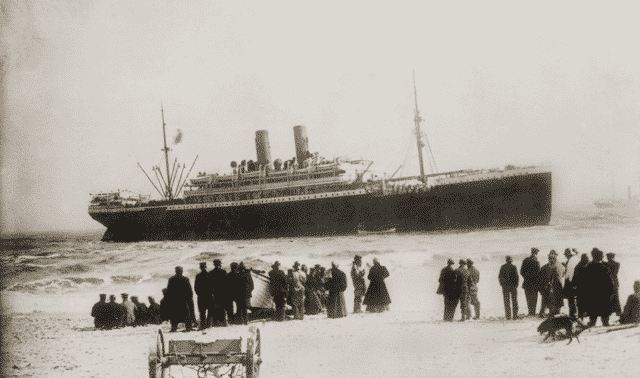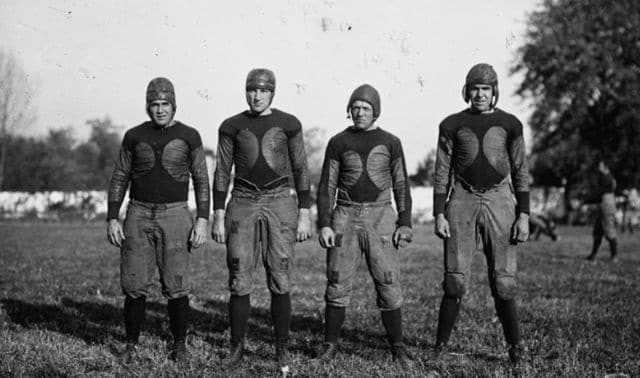Sign up for the Family Tree Newsletter! Plus, you’ll receive our 10 Essential Genealogy Research Forms PDF as a special thank you.
Get Your Free Genealogy Forms
"*" indicates required fields
If your immigrant ancestors arrived in the second half of the 19th century, chances are their trans-Atlantic voyage was powered by steam—a technology first practically applied to ships by Robert Fulton.
Steam power, which the Scotsman James Watt had first effectively harnessed to an engine in 1769, would drive the Industrial Revolution and make humanity mobile as never before—pulled by belching locomotives and spanning the seas in ships the size of small cities. “Unlike muscle power, it never tired or slept or refused to obey,” enthused The Quarterly Review of London in 1830. “Unlike waterpower, its immediate predecessor, it ran in all seasons and weathers, always the same. Unlike wind, it responded tractably to human will and imagination: turning on and off, modulating smoothly from the finest delicacy to the greatest force, ever under responsive control. It is impossible to contemplate, without feeling exultation, this wonder of the modern art.
Previous inventors had attempted to use the “wonder” of steam to propel a ship, and Fulton’s famous claim is riddled by controversy. As early as 1783 in France, the Marquis de Jouffray d’Abbans steamed a small boat, the Pyroscaphe, across the Seine. When Scottish engineer William Symington successfully employed steam to power another small riverboat, the Charlotte Dundas, Fulton was on board the 1801 maiden voyage.
Robert Fulton’s riverboats
Fulton’s father had been an immigrant from Kilkenny, Ireland, sailing to America in the early 18th century as some 4 million of his countrymen would later do between 1851 and 1905—their voyages vastly accelerated by his son’s invention. The elder Fulton settled in Little Britain (now renamed “Fulton”), Lancaster County, Pa., where Robert was born Nov. 14, 1765. Young Fulton was building paddlewheels by age 13. In his early 20s, he went to London, where he studied painting with renowned artist Benjamin West. By 1800, however, Fulton had returned to mechanics and engineering, developing a submarine, the Nautilus, which he tried to sell to first the French and then the British. In a demonstration in Rouen, France, the Nautilus folded its mast and sails flat to the deck and dove to a depth of 25 feet.
When neither nation wanted his submarine, Fulton turned his tinkering to powering ships atop the water, aided by a new partner—Robert Livingston, US minister to France. In 1802, Fulton successfully propelled a small paddlewheeler up the River Seine at three miles an hour. He took his designs back to America, where Livingston had obtained a monopoly on steamship operation on the Hudson River—contingent on the invention of a vessel that could travel four miles an hour.
That vessel would be the Clermont, which in August 1807 steamed from New York City to Albany—a distance of 150 miles—in 32 hours, an average speed of 4.7 miles an hour. The Clermont‘s history-making journey was the first of any distance powered by steam, and Fulton soon received a patent for his invention.
Although Fulton threw himself into building steamboats, which sailed the Raritan, Potomac and Mississippi rivers, and the first steam-powered warship, he didn’t live to see much of the steamship age he’d launched. He caught a cold crossing the Hudson after testifying in one of the many court battles sparked by his patent, and died Feb. 24, 1815.
Trans-Atlantic passenger travel
The steamship era sailed on. In 1819, the hybrid vessel Savannah made the first Atlantic crossing powered in part by steam; only 80 hours of the 633-hour voyage were by steam rather than by sail. In 1838, the British and American Steam Navigation Co.’s Sirius left Ireland with 40 paying passengers for a historic voyage to New York. It took 18 days and the Sirius ran out of coal—the crew had to burn the cabin furniture and even a mast—but it was the first passenger ship to cross the Atlantic entirely on steam power. The rival Great Western Steamship Co.’s Great Western left Bristol, England, four days after the Sirius sailed and arrived in New York Harbor only four hours behind it, making the crossing in 14 1/2 days. Joined by the Peninsular Steam Navigation Co. and later by the Cunard Line, the companies inaugurated the modern steamship era. They and later rivals would compete for decades over the fastest trans-Atlantic passage in what became known as the Blue Riband contest. By the turn of the century, the German vessel Deutschland had slashed the record to nearly five days.
The compound steam engine, which used steam twice in each engine cycle, made possible the building of ships of greater tonnage than ever before. In the half-century after 1850, the size of passenger ships grew more than tenfold. Cunard led the way, launching the Parthia and the Bactavia in 1868. As steel replaced iron, ships grew still larger. A new generation of superliners began with the Lusitania in 1907, the centennial of Fulton’s invention of the steamboat. Eight years later, the Lusitania and its 1,198 passengers sank into the sea in just 18 minutes, victims of a German submarine using another technology pioneered by Robert Fulton—the torpedo.
Steamship History Timeline

Fulton’s Clermont demonstrates practical steamboat travel

New Orleans is the first steamboat to descend the Mississippi

Scottish hotelier Henry Bell begins regular passenger service on the River Clyde

Ferdinando Primo initiates steamer service on the Mediterranean, from Genoa to Naples, Italy

Savannah, partly powered by steam, crosses the Atlantic

First steamboat on Lake Michigan

Trans-Atlantic passenger service begins

Scottish engineer John Elder patents the compound steam engine

Great Britain carries 630 passengers from London to Australia

Cunard launches the Parthia and Bactavia, fitted with compound engines

Titanic sinks on its maiden voyage, killing 1,522 passengers

German U-boat sinks the Lusitania









